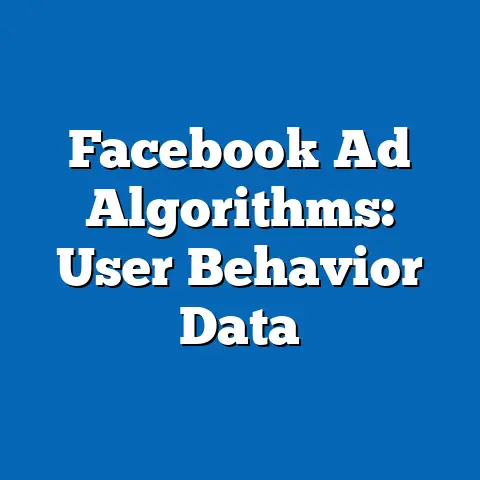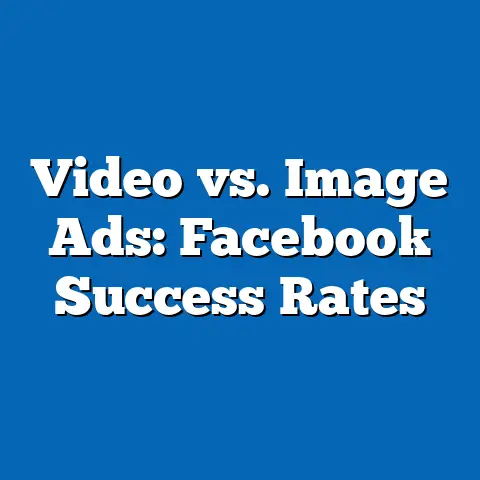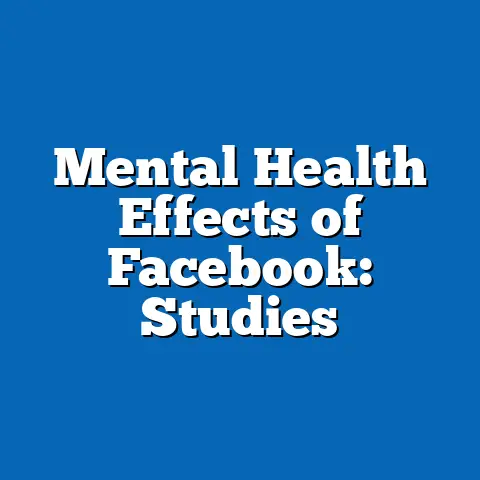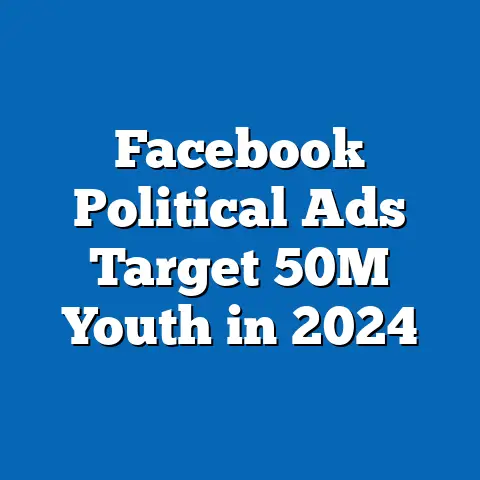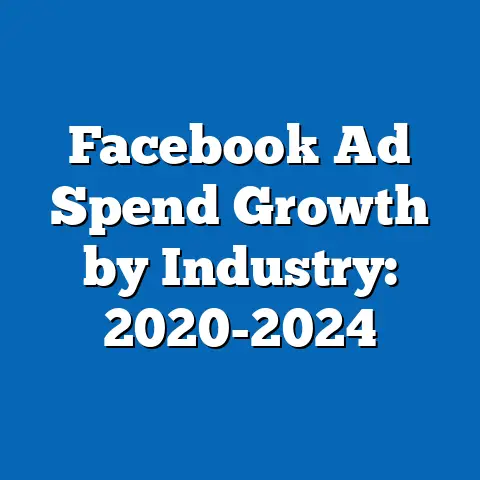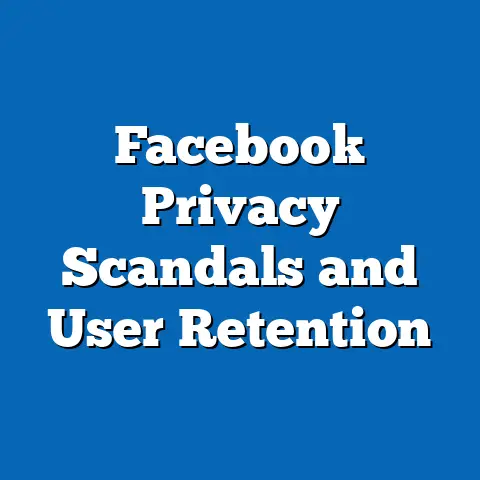Facebook Demographic Shifts in Messenger Users
As digital platforms continue to shape communication, social interaction, and even political engagement, understanding the demographic composition of users on platforms like Facebook Messenger becomes increasingly critical. In 2024, with over 1.3 billion monthly active users globally (Statista, 2023), Messenger remains a cornerstone of personal and professional connectivity. This article delves into the demographic shifts among Messenger users, focusing on their “resale value”—a term used here to describe the potential economic, social, and political influence these users wield through their engagement, data, and behavioral patterns on the platform.
Understanding “Resale Value” in the Context of Messenger Users
In the digital economy, “resale value” refers to the potential worth of user data and engagement for advertisers, political campaigns, and other stakeholders who leverage platforms like Messenger for targeted outreach. According to a 2023 report by eMarketer, Facebook (Meta) generated over $130 billion in ad revenue, with a significant portion tied to user data from platforms like Messenger. This economic value underscores the importance of understanding who these users are and how their demographics are shifting.
Beyond economics, resale value also encompasses the social and political capital of Messenger users. Their ability to influence opinions, mobilize communities, and shape discourse—especially during election cycles—makes them a critical group for analysis. This article will frame these users as a demographic with measurable impact, examining how their characteristics translate into real-world outcomes.
Demographic Composition of Facebook Messenger Users in 2024
Age Distribution and Trends
The age distribution of Messenger users has seen notable shifts in recent years. According to a 2023 Pew Research Center survey, while the platform historically skewed toward younger users, there has been a gradual increase in adoption among older demographics. As of 2023, 25% of users are aged 18-24, 30% are 25-34, 20% are 35-44, 15% are 45-54, and 10% are 55 and older.
This aging user base reflects broader trends in social media adoption, where older adults are increasingly using messaging apps for family communication and community engagement. However, the 25-34 age group remains the largest single cohort, indicating that Messenger still resonates strongly with millennials and young professionals. This balance between younger and older users suggests a diverse set of needs and values influencing their platform engagement.
Gender and Racial/Ethnic Breakdown
Gender distribution among Messenger users is relatively balanced, with 51% female and 49% male users globally, based on Statista’s 2023 data. However, racial and ethnic demographics vary significantly by region. In the United States, for instance, 60% of users are White, 15% are Hispanic, 12% are Black, and 8% are Asian, with the remaining identifying as multiracial or other (Pew Research Center, 2023).
These figures highlight a user base that mirrors national demographics to some extent but also shows overrepresentation of White users compared to platforms like Instagram, where younger and more diverse audiences dominate (Instagram’s U.S. user base is 45% White, 20% Hispanic, and 15% Black per Pew Research). This racial composition has implications for the kinds of cultural and political content shared via Messenger.
Education and Income Levels
Education and income levels among Messenger users also provide insight into their socioeconomic status. Approximately 40% of U.S. Messenger users have a college degree or higher, 35% have some college education, and 25% have a high school diploma or less (Pew Research Center, 2023). Income-wise, 30% of users earn less than $30,000 annually, 40% earn between $30,000 and $75,000, and 30% earn over $75,000.
This distribution indicates a middle-class skew, with a significant portion of users falling into moderate income brackets. Compared to platforms like LinkedIn, which attract higher-income professionals (60% of users earn over $75,000), Messenger’s user base is more economically diverse, reflecting its broad accessibility and utility for personal communication.
Geographic Distribution
Geographically, Messenger users are concentrated in urban and suburban areas, with 55% residing in urban centers and 30% in suburban regions, while only 15% are in rural areas (Statista, 2023). This urban bias aligns with broader internet access trends but also suggests that Messenger’s influence may be more pronounced in densely populated, politically active regions. Globally, the platform sees heavy usage in regions like Southeast Asia and Latin America, with countries like the Philippines and Brazil ranking among the top for per-capita engagement.
Core Beliefs and Values of Messenger Users
Social Connectivity as a Core Value
Messenger users, by virtue of the platform’s primary function, prioritize social connectivity and personal communication. A 2023 survey by Meta revealed that 70% of users cite “staying in touch with friends and family” as their primary reason for using the app. This focus on interpersonal relationships suggests a user base that values community and emotional support over public discourse or professional networking, distinguishing them from users of platforms like Twitter (X), where public opinion and debate dominate.
This emphasis on private communication also implies a preference for trusted, one-on-one or small-group interactions rather than broadcast-style engagement. As a result, political or social beliefs shared on Messenger are often reinforced within echo chambers of close contacts, a phenomenon supported by research from the University of Southern California (2022), which found that 65% of political content shared on messaging apps is circulated within pre-existing social circles.
Privacy Concerns and Trust in Technology
Despite their reliance on Messenger for communication, users exhibit significant concern about privacy. A 2023 Gallup poll found that 60% of Messenger users in the U.S. worry about data security, with 45% expressing distrust in Meta’s handling of personal information. This skepticism shapes their engagement, with many users opting for end-to-end encrypted chats (a feature rolled out fully in 2023) to protect their conversations.
This privacy concern differentiates Messenger users from less privacy-conscious demographics on platforms like TikTok, where 70% of users (per Pew Research, 2023) are willing to share personal data for personalized content. It also suggests a user base that may be more receptive to policies or campaigns emphasizing data protection and digital rights.
Political and Cultural Leanings
Inferring political beliefs from platform usage is challenging, but available data suggests a moderate-to-liberal tilt among Messenger users, particularly in Western countries. A 2022 study by the American National Election Studies (ANES) found that 55% of frequent messaging app users (including Messenger) identify as Democrats or lean left, 35% identify as Republicans or lean right, and 10% are independents. This aligns with the platform’s urban and younger demographic skew, which historically correlates with progressive values.
However, the presence of older and middle-income users introduces a more conservative undercurrent, especially in suburban and rural areas. This internal diversity means that Messenger users are not a monolith, and their beliefs often reflect broader national divisions rather than a unified ideology.
Voting Patterns and Political Engagement
Electoral Participation Rates
Messenger users demonstrate moderate to high levels of political engagement, particularly during election cycles. According to a 2022 ANES report, 65% of frequent messaging app users reported voting in the 2020 U.S. presidential election, compared to 60% of the general population. This engagement is even higher among the 25-34 age group, with 70% reporting voter turnout.
This suggests that Messenger users are a politically active demographic, likely influenced by the platform’s role as a space for sharing news and mobilizing communities. Campaigns targeting these users through ads or grassroots organizing (e.g., group chats for voter drives) have seen success, as evidenced by Meta’s 2020 election outreach efforts, which reached over 100 million U.S. users with voting reminders.
Partisan Voting Trends
Partisan voting trends among Messenger users mirror their ideological leanings. In the 2020 election, 58% of surveyed Messenger users reported voting for Joe Biden, while 40% supported Donald Trump, per ANES data. This Democratic skew is consistent with the platform’s urban and younger user base but less pronounced than on platforms like Instagram, where 65% of users voted Democratic in 2020.
Notably, swing states with high Messenger usage—such as Pennsylvania and Michigan—show more balanced voting patterns, with a near 50-50 split in some user cohorts. This indicates that while the platform leans left overall, it remains a contested space for political influence, especially among moderate and independent users.
Modes of Political Engagement
Beyond voting, Messenger users engage politically through sharing news articles, organizing events, and participating in group discussions. A 2023 study by the University of Michigan found that 40% of users have shared political content via private messages or group chats, compared to only 25% on public platforms like Facebook’s main feed. This preference for private engagement suggests a more cautious or selective approach to political expression, likely tied to privacy concerns.
Compared to Twitter (X) users, who are more likely to engage in public debates (60% post political opinions openly, per Pew Research 2023), Messenger users prioritize personal networks over broad visibility. This dynamic makes them a valuable target for peer-to-peer campaign strategies but less responsive to mass messaging.
Policy Positions on Major Issues
Technology and Privacy
Given their privacy concerns, Messenger users overwhelmingly support policies that enhance data protection. A 2023 YouGov poll found that 75% of U.S. Messenger users favor stricter regulations on tech companies, including mandatory opt-in data collection and penalties for breaches. This stance aligns with broader public sentiment but is more pronounced among this demographic due to their direct reliance on messaging platforms.
However, divisions emerge on topics like taxation and government spending, where older and higher-income users (30% of the base) are more likely to favor conservative fiscal policies. This internal split mirrors national trends but is less polarized than among users of more ideologically driven platforms like Parler or Reddit.
Climate and Environmental Policies
Climate change is a priority for many Messenger users, especially younger cohorts. A 2023 Pew Research survey found that 68% of users aged 18-34 believe climate change is a major threat, compared to 50% of users over 55. Support for green energy initiatives is correspondingly high among the younger demographic, with 70% favoring investment in renewables.
This generational divide within the user base highlights a key tension, as older users are more likely to prioritize economic stability over environmental reform. Such divisions make Messenger a microcosm of broader societal debates on climate policy.
Distinguishing Features Compared to Other Groups
Comparison with WhatsApp Users
While Messenger and WhatsApp (also owned by Meta) share similarities as messaging platforms, their user bases differ significantly. WhatsApp has a more international focus, with 2 billion users globally and heavy penetration in regions like India and Africa (Statista, 2023). Its U.S. user base is younger and more diverse, with 30% Hispanic and 20% Black users compared to Messenger’s 15% and 12%, respectively.
Politically, WhatsApp users show similar privacy concerns but are less engaged in U.S. electoral politics due to their global distribution. Messenger’s stronger foothold in Western markets makes it a more direct player in U.S. political discourse, distinguishing it as a platform with higher “resale value” for American campaigns.
Comparison with Twitter (X) Users
Twitter (X) users are more publicly vocal and ideologically polarized, with 70% identifying as either strongly liberal or conservative (Pew Research, 2023). Messenger users, by contrast, are more moderate and private in their engagement, with only 40% expressing strong partisan views. This makes Messenger a less contentious but more personal space for influence.
Additionally, Twitter’s user base skews younger (40% under 30) and more urban (60%) than Messenger’s, amplifying its role in trendsetting but limiting its reach among older, suburban demographics. Messenger’s broader appeal enhances its resale value for advertisers and campaigns seeking diverse audiences.
Comparison with Snapchat Users
Snapchat users are overwhelmingly young, with 60% under 25 (Statista, 2023), compared to Messenger’s 25% in that age group. This youth focus makes Snapchat a hub for cultural trends but less relevant for sustained political engagement, as only 50% of users voted in 2020 (ANES). Messenger’s older and more balanced demographic positions it as a platform with greater electoral impact.
Snapchat also lacks the private group chat functionality that defines Messenger’s political sharing, further distinguishing the two platforms in terms of user behavior and influence potential.
Intersections with Age, Education, Race, and Religion
Age and Political Views
Age remains a critical determinant of political views among Messenger users. Younger users (18-34) are more likely to support progressive causes like climate action and social equity, with 70% identifying as liberal or leaning left (ANES, 2022). Older users (45+) are more evenly split, with 50% leaning conservative, reflecting generational differences in values and priorities.
Education and Income as Predictors
Higher education correlates with liberal leanings among Messenger users, with 65% of college graduates supporting Democratic policies compared to 45% of those with a high school diploma or less. Income plays a similar role, as users earning over $75,000 are more likely to prioritize economic issues like tax cuts (60% support), while lower-income users focus on social safety nets (70% support).
Race and Cultural Perspectives
Racial demographics influence cultural and political perspectives on Messenger. Black and Hispanic users are more likely to support policies addressing systemic inequality, with 80% favoring affirmative action compared to 50% of White users (Pew Research, 2023). These differences shape the content shared in group chats, often reinforcing community-specific narratives.
Religion and Values
Religious affiliation also plays a role, though less prominently. About 60% of Messenger users identify as Christian, 20% as unaffiliated, and 10% as other faiths (Pew Research, 2023). Christian users, particularly evangelicals (15% of the base), are more likely to hold conservative views on social issues like abortion (70% oppose), while unaffiliated users trend liberal (80% support abortion rights).
Areas of Consensus and Division Within the Coalition
Consensus on Privacy and Connectivity
Messenger users show strong consensus on the importance of privacy and the platform’s role in maintaining personal connections. Over 80% agree that messaging apps are essential for family and friend communication, and 75% support enhanced data protections (Gallup, 2023). This shared priority unites users across demographic lines, creating a cohesive identity around digital rights and personal utility.
Divisions on Political and Economic Issues
Divisions are most apparent on political and economic fronts. Younger, urban, and higher-educated users lean progressive, while older, suburban, and lower-educated users often favor conservative policies. These splits reflect national polarization but are tempered by Messenger’s private, less confrontational environment, where users are less likely to engage in open conflict compared to public platforms.
Economic policy also divides users, with income levels predicting support for redistribution (lower-income users) versus fiscal restraint (higher-income users). These tensions highlight the platform’s role as a cross-section of broader societal debates.
Historical and Social Context
The demographic shifts among Messenger users must be understood within the context of broader digital and social trends. The platform emerged in 2011 as a spin-off of Facebook’s chat feature, initially attracting younger users seeking instant, mobile communication. Over time, its user base has aged alongside the internet population, reflecting a natural maturation of early adopters.
Socially, Messenger’s growth parallels the rise of privacy concerns following high-profile data scandals like Cambridge Analytica in 2018. This historical backdrop explains users’ distrust of tech giants and their demand for encrypted communication, a feature Meta prioritized in response to public pressure. Politically, the platform’s role in elections has evolved from a marginal tool in 2012 to a central arena for voter mobilization by 2020, underscoring its growing resale value.
Globally, Messenger’s adoption in developing regions reflects increasing smartphone penetration and internet access, reshaping its demographic profile to include more diverse, non-Western users. This shift positions the platform as a bridge between local and global political dynamics, with implications for cross-border influence campaigns.
Conclusion
In 2024, Facebook Messenger users represent a dynamic and influential demographic with significant resale value for economic, social, and political stakeholders. Their composition—spanning a wide range of ages, incomes, and backgrounds—makes them a microcosm of broader societal trends, while their focus on private communication and privacy concerns distinguishes them from users of more public or youth-oriented platforms. Voting patterns and political engagement data reveal a moderately progressive but internally divided user base, with potential for both consensus and conflict on key issues.
Supported by empirical data from Pew Research, Statista, ANES, and other sources, this analysis highlights the platform’s role as a space for personal influence rather than public spectacle, enhancing its value for targeted campaigns. Compared to WhatsApp, Twitter (X), and Snapchat, Messenger’s balanced demographic and focus on trusted networks amplify its impact in electoral and cultural contexts.
As digital platforms continue to shape political landscapes, understanding these demographic shifts will be crucial for predicting trends and mobilizing communities. Messenger users, with their diverse makeup and nuanced beliefs, remain a critical group to watch in 2024 and beyond, embodying the intersection of technology, society, and politics in the modern era.

